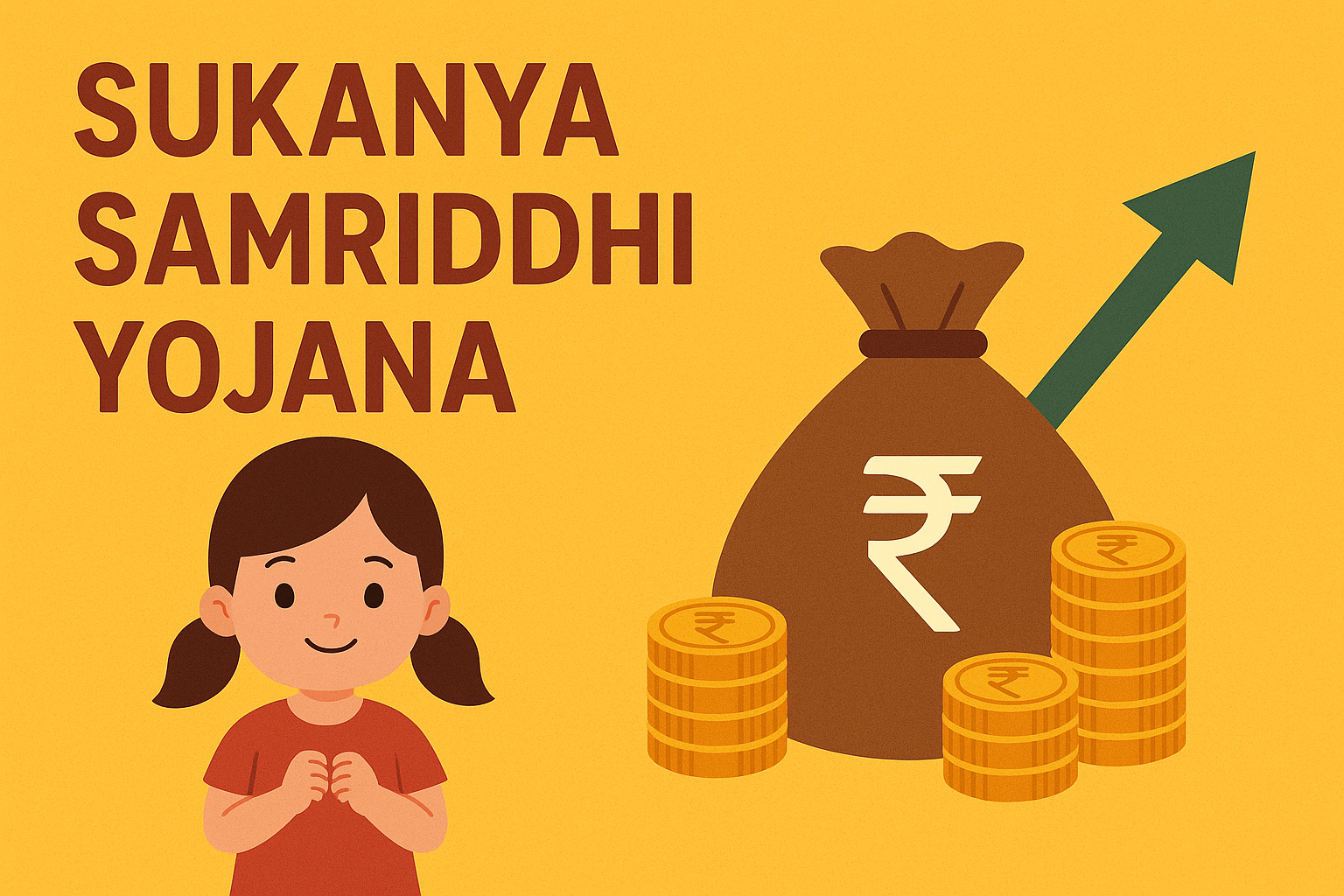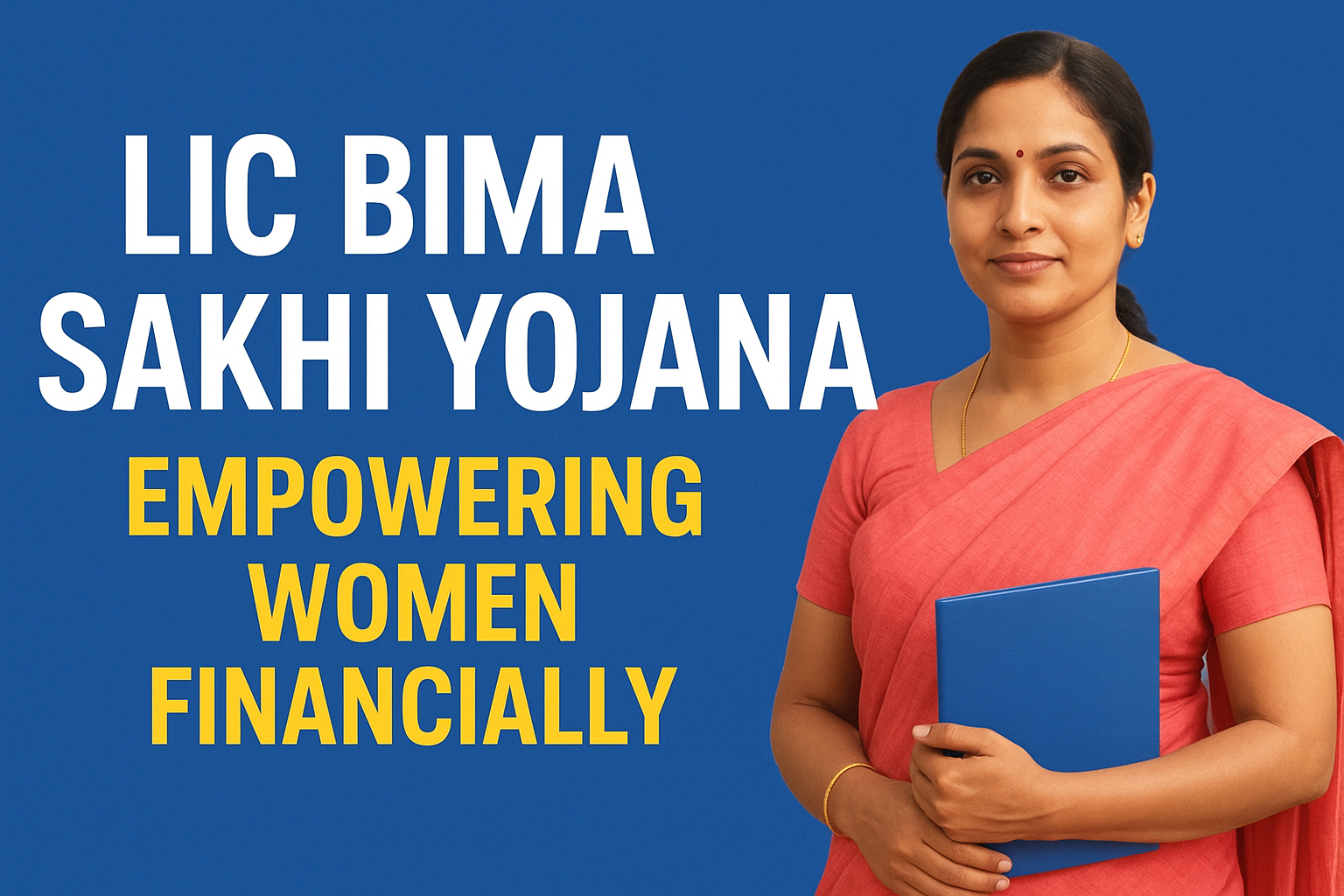In India, parents always dream of giving their daughters the best education, a secure future, and a smooth start in life. To support this vision, the Government of India introduced the Sukanya Samriddhi Yojana (SSY) under the Beti Bachao Beti Padhao campaign. This savings scheme is designed to encourage parents to build a strong financial foundation for their girl child, ensuring funds are available when needed for education or marriage.
In this blog, we will discuss the features, eligibility, benefits, interest rates, withdrawal rules, and step-by-step process to open a Sukanya Samriddhi Account.
What is Sukanya Samriddhi Yojana?
Sukanya Samriddhi Yojana is a small deposit savings scheme exclusively for girl children. It offers one of the highest interest rates among small savings schemes and comes with tax benefits under the Income Tax Act.
The account can be opened in the name of a girl child by her parents or legal guardians and is available in post offices and authorised banks across India.
Key Features of Sukanya Samriddhi Account
- Exclusive for Girl Child – Only parents/guardians of a girl child can open this account.
- High Interest Rate – The interest rate is decided quarterly by the government and is generally higher than most fixed deposits.
- Long-Term Savings – The account has a maturity period of 21 years from the date of opening.
- Small Minimum Deposit – You can start with as little as ₹250 per year.
- Maximum Deposit Limit – You can deposit up to ₹1.5 lakh per year.
- Flexible Deposits – You can deposit any number of times in a financial year (subject to limits).
- Partial Withdrawal Facility – Available after the girl turns 18 for education purposes.
- Guaranteed by Government – Being a government-backed scheme, it is completely safe.
Eligibility Criteria
To open a Sukanya Samriddhi Account:
The girl child must be a resident of India.
The account must be opened before she turns 10 years old.
Only one account per girl child is allowed.
A family can open accounts for a maximum of two girl children. In case of twins or triplets, more accounts are allowed with proof.
How to Open a Sukanya Samriddhi Account
You can open the account in post offices or at authorised banks such as SBI, PNB, Axis Bank, ICICI Bank, HDFC Bank, and more.
Steps to open the account:
- Visit your nearest post office or authorised bank.
- Collect the Sukanya Samriddhi Account opening form.
- Fill in details like the girl child’s name, date of birth, guardian’s details, and address.
- Attach required documents:
Birth certificate of the girl child
Parent/guardian’s ID proof (Aadhaar, PAN, Voter ID)
Address proof (Aadhaar, Passport, Utility bill)
Photograph of the child and guardian
- Deposit the initial amount (minimum ₹250).
- Once the application is verified, the account will be opened, and a passbook will be issued.
Interest Rate on Sukanya Samriddhi Yojana
The interest rate is reviewed every quarter by the Ministry of Finance. As of the latest update, it is 8.2% per annum (subject to change). The interest is compounded annually and credited to the account at the end of each financial year.
Example: If you deposit ₹1,50,000 every year for 15 years at an interest rate of 8.2%, by maturity, you could accumulate over ₹65 lakh.
Deposit Rules
Minimum deposit: ₹250 per year.
Maximum deposit: ₹1.5 lakh per year.
Deposits can be made for 15 years from the date of account opening.
After 15 years, no further deposits are required, but the account will continue to earn interest until maturity.
Tax Benefits
One of the biggest attractions of SSY is the tax advantage:
Deduction under Section 80C – Deposits up to ₹1.5 lakh qualify for tax deduction.
Tax-Free Interest – Interest earned is exempt from tax.
Tax-Free Maturity – The maturity amount is completely tax-free.
This makes SSY an EEE (Exempt-Exempt-Exempt) scheme.
Withdrawal Rules
The scheme is designed for long-term goals, so withdrawals are restricted:
- Partial Withdrawal – Allowed after the girl turns 18 or has passed Class 10, whichever is earlier.
Up to 50% of the balance from the previous financial year can be withdrawn for higher education or marriage.
- Maturity – The account matures after 21 years from the date of opening, or upon marriage of the girl after she turns 18.
- Premature Closure – Allowed in cases of:
Death of the account holder
Life-threatening disease
Change in residency status
Benefits of Sukanya Samriddhi Yojana
- High Returns with Safety – Government-backed and risk-free.
- Encourages Savings for Girl Child – Helps parents plan for future expenses.
- Affordable for All – Low minimum deposit.
- Tax Savings – Triple tax benefit under Section 80C.
- Flexible Payment Options – Can deposit multiple times in a year.
- Financial Independence – Ensures funds are available for education or marriage.
Things to Keep in Mind
If you fail to deposit the minimum ₹250 in a year, the account will become inactive. You can reactivate it by paying a penalty of ₹50 per year along with the minimum deposit.
The account can be transferred from one bank/post office to another in case of relocation.
Deposits must be made for 15 years; after that, the account earns interest till maturity.
Comparison with Other Savings Schemes
Feature Sukanya Samriddhi Yojana Fixed Deposit PPF
Interest Rate Higher than FD & PPF Lower Lower than SSY
Tax Benefits Yes (EEE) Partial Yes (EEE)
Lock-in Period 21 years Flexible 15 years
Target Group Girl Child Anyone Anyone
Example Calculation
Let’s say you open an SSY account for your 1-year-old daughter and deposit ₹1,50,000 every year for 15 years at 8.2% interest.
Total Deposit: ₹22,50,000
Interest Earned: Approximately ₹42,50,000
Total Maturity Amount: Around ₹65,00,000
This shows how powerful long-term compounding can be in securing your daughter’s future.
Final Thoughts
The Sukanya Samriddhi Yojana is not just a savings account—it’s a commitment towards your daughter’s future. With its high interest rates, tax-free returns, and government backing, it is one of the most reliable investment options for parents who want to save for their girl child’s education and marriage.
By starting early and staying consistent with deposits, you can ensure that your daughter has the financial support she needs when she steps into adulthood.







